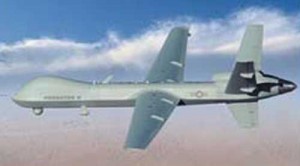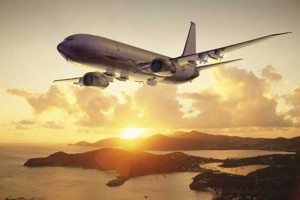Given the extent of our frontiers, infrastructure for total coverage solely through ground based surveillance systems would be prohibitively expensive and possibly unaffordable. The AWACS aircraft would be a more cost effective option as it would also provide low level cover deep inside enemy territory not only to direct own forces but also to track hostile aircraft departing for missions from their bases thus facilitating positive identification and increasing substantially the reaction time available to the air defence system.
While there is no debate over the necessity of AWACS aircraft, the question is that of numbers. In the event of imminent or outbreak of hostilities, AWACS aircraft would have to be `on station` round the clock in adequate numbers to cover the entire length of hostile borders.
 Given the limitations of endurance of the aircraft and the crew, serviceability considerations of an infinitely complex machine and the volume of the airspace to be scanned, the IAF would have to reassess the size of the fleet required to be procured.
Given the limitations of endurance of the aircraft and the crew, serviceability considerations of an infinitely complex machine and the volume of the airspace to be scanned, the IAF would have to reassess the size of the fleet required to be procured.
The fleet of Phalcon equipped IL 76 aircraft being acquired in the next two to three years, will only provide a learning experience. To meet with needs of the 2020s, the size of the AWACS fleet would have to be significantly larger and hopefully augmented by the DRDO developed Embraer based system. Integrating the AWACS in to the Air Defence System, developing the technical skills to maintain and operate the platform and finding the resources to procure these machines in the requisite numbers would be some of the major challenges for the IAF and the nation.
To exploit the advantage of extended low level cover provided by the AWACS, air defence aircraft must be armed with Beyond Visual Range missiles with range long enough to intercept hostile targets well before they are in a position to pose any threat. A network of long and short range surface to air missile systems with high kill probabilities would be required to provide the necessary defence in depth.
Strategic & Tactical Airlift Capability
The emerging regional power status requires the nation to have the capability to intervene in the region to preserve peace and stability. Action of this nature was witnessed in the late eighties on a small scale in Sri Lanka and the Maldives. Operations of this nature may have to be conducted on a larger scale in the future. The existing strategic airlift capability structured around the IL 76 fleet acquired in the mid eighties is grossly inadequate for the perceived strategic role for reasons such as fleet size, poor state of serviceability and low residual calendar life of the fleet.
The existing ground based surveillance assets are woefully inadequate for even the current level of responsibility and need total revamp.
The IAF must have strategic airlift capability to deploy at least a Brigade Group along with their combat equipment in a single wave over extended range to cover the area of interest without the need for intermediate refuelling stopover. The IAF needs to reassess the shape and size of strategic airlift fleet and plan the induction of the replacement aircraft within ten years from now. Updated versions of the American C-17 and the C 130 or the European A400 could be some of the possible options. Contingency plans must include employment of the huge civil air fleet as well. In view of their larger reaction time however, the civil air fleet will be useful not for initial response but for induction of larger formations and for supporting operations that follow.
In addition to the strategic airlift capability, the nation will also need a sizeable tactical airlift capability which must combine medium tactical transport aircraft and heavy lift helicopters. Plans by HAL to develop a medium tactical transport aircraft in collaboration with renowned international partners, is yet in a nascent stage and need to be pursued with singular focus as the AN 32 fleet will have to be phased out in a decade or so.
 Tactical airlift capability will be required for inserting a battalion group directly into battle in airborne assault operations or for air mobility of ground forces for inter-theatre operational redeployment in response to rapid changes in the situation, for a variety of internal security tasks as nearly 30 % of the districts in this country are naxalite infested in addition to insurgency in J & K and the north eastern regions and the management of disaster.
Tactical airlift capability will be required for inserting a battalion group directly into battle in airborne assault operations or for air mobility of ground forces for inter-theatre operational redeployment in response to rapid changes in the situation, for a variety of internal security tasks as nearly 30 % of the districts in this country are naxalite infested in addition to insurgency in J & K and the north eastern regions and the management of disaster.
The IAF needs to build up heliborne forces trained for operating both by day and night obtaining real time intelligence information from UAVs for vertical envelopment in counter insurgency operations in all types of terrain. Action is in hand to acquire 80 helicopters of the MI 17 class which will meet with current requirements. For the 2020s, a fresh assessment would be necessary.




